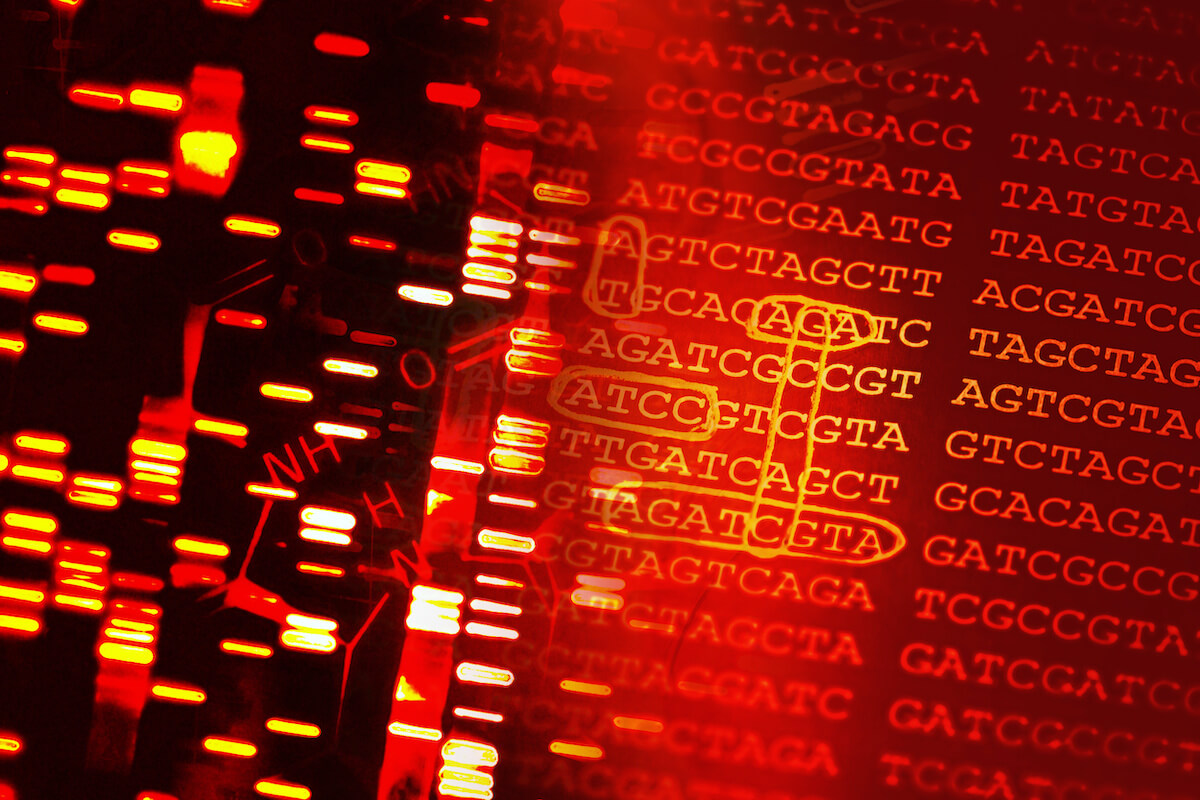IN THE HUNT
For Genetic Causes of Disease
Alzheimer’s Disease
The Hunt for Rare Genetic Variants
SECTION: GENOMICS OF NEURODEGENERATIVE DISEASES AND AGING
Alzheimer’s disease is the most common neurodegenerative disease in the world today, affecting about 10% of people over 69 years old. Currently, there is no cure or effective treatment for this feared affliction that robs people of the very essence of their identities. In a collaborative landmark research study published in the top scientific journal Nature Genetics, members of the Holstege lab identified new genetic risk factors linked to Alzheimer’s disease.


Although the exact causes of Alzheimer’s disease (AD) are not fully understood, it is clear that genetics plays an important role in this complex disease. For example, the risk of developing AD before 65 years depends fully on genetic factors while after 65 years, the genome’s influence decreases as age increases.
Genome-wide association studies (GWAS) have found about 75 genetic regions that are associated with Alzheimer’s Disease. However, these types of studies focus on variations that are more common in the population. Individually, variations found with GWAS typically have only a small effect on AD risk. On the other hand, genetic variants that have a large impact on AD risk are usually very rare in the population and need to be identified using different strategies.

Identifying new genetic risk factors in Alzheimer’s disease
To uncover rare variants associated with Alzheimer’s, a large international collaboration including researchers from the Section Genomics of Neurodegenerative Diseases and Aging compared DNA exome sequencing data from 32,558 individuals – half with Alzheimer’s and half without (the control group).
In addition to confirming three known rare variants, the team discovered several new rare and predicted damaging variants in various genes (TREM2, SORL1, ABCA7, and possibly ADAM100). Moreover, rare variants in RIN3, CLU, ZCWPW1 and ACE overlapped with genome locations that were previously identified in other genome-wide association studies, highlighting these genes as potential drivers of Alzheimer’s disease. In addition, the most damaging genetic variants – usually loss of gene function alterations – were found more often in patients with early-onset AD.
New insights, new prospects
“The function of the newly associated genes provides additional evidence for a central role for amyloid-β precursor protein processing, amyloid-β aggregation, lipid metabolism, and neuroinflammatory processes in Alzheimer’s,” said shared first authors Dr. Henne Holstege and Dr. Marc Hulsman.

More research is needed to further establish the role of the identified rare genetic variants in AD. “Because these genetic signals are so rare, we will need even larger datasets to further confirm the association with Alzheimer’s,” says Dr. Holstege. “Plus, we know we have not found all damaging genetic variants yet. We also need to consider structural variants – like copy number changes and repetitive sequences – in future studies.” Dr. Hulsman concludes: “Importantly, identification of these rare damaging variants opens the door for the possibility of treatment options in the future.”
"Identification of these rare damaging variants opens the door for the possibility of treatment options in the future.” Dr. Marc Hulsman

Read the scientific publication: Holstege, H., Hulsman, M., Charbonnier, C. et al. Exome sequencing identifies rare damaging variants in ATP8B4 and ABCA1 as risk factors for Alzheimer’s disease. Nat Genet 54, 1786–1794 (2022). https://doi.org/10.1038/s41588-022-01208-7
More information and news from the Section Genomics of Neurodegenerative Diseases and Aging is now available on their website: Holstege Lab

Schizophrenia
The Search for the Genetic Causes of Schizophrenia
SECTION: FUNCTIONAL GENOMICS
The search for the genetic causes of schizophrenia has marked an important milestone. In the largest genetic study ever of this disorder, researchers compared the genomes of more than 300,000 people and uncovered new rare DNA variants associated with the disease. A significant proportion of the newly found genetic variants appear to be involved in signal transmission between nerve cells. The study was published in the leading scientific journal Nature.


Schizophrenia is a serious psychiatric disorder that starts in late adolescence or early adulthood and affects about one in 300 people. There is no cure for schizophrenia, but many patients can function with antipsychotic medications that reduce acute symptoms.
Thanks to recent breakthroughs in genetic technologies, it is now feasible to explore the intricate genetic makeup that lies at the root of this disease. This, in turn, holds the potential for discovering innovative and effective new therapies.
Towards this aim, a collaboration involving hundreds of researchers across 45 countries analyzed DNA from more than 300,000 people – 76,755 people with schizophrenia and 243,649 without. The study, directed by the Psychiatric Genomics Consortium (PGC) and published in Nature, identified 287 distinct DNA locations containing genetic variants that were associated with the disease.
Co-operation with SYNGO
A significant number of variants were concentrated in genes expressed in neurons and their sites of contact, the synapses. The Synaptic Gene Ontology (SYNGO) consortium, coordinated by the Center for Neurogenomics and Cognitive Research (CNCR) at Vrije Universiteit Amsterdam, was responsible for the functional annotation of synaptic genes among the observed genetic links. SYNGO includes Amsterdam UMC researchers Dr. Frank Koopmans, Dr. Loek van der Kallen, Prof. Guus Smit, and Prof. Matthijs Verhage.
SYNGO analyzed 15 new genes associated with schizophrenia that encoded pre- and postsynaptic proteins. These new links open novel research directions to understand how synaptic deficits contribute to the risk for schizophrenia.
“The SYNGO consortium is really proud to contribute to this global collaboration, which is unprecedented in scope, and apply its expertise on synapse biology towards the understanding of schizophrenia.” Prof. Matthijs Verhage, co-coordinator of SYNGO and professor of Functional Genomics.
“The contribution of SYNGO to the analyses opens the door to new research into synaptic dysfunction in schizophrenia,” says Guus Smit, co-coordinator of SYNGO and director of CNCR. “In addition, many of the neuronal genes implicated have fundamental roles and are expressed in many different locations in the brain, which may explain the diversity of symptoms associated with the disease like hallucinations, delusions, and problems with thinking clearly.”
Read the scientific publication:
Trubetskoy, V., Pardiñas, A.F., Qi, T. et al. Mapping genomic loci implicates genes and synaptic biology in schizophrenia. Nature 604, 502–508 (2022). https://doi.org/10.1038/s41586-022-04434-5
Text adapted from: ‘Biggest study so far implicates synaptic genes in schizophrenia’
More information and news from the Section Functional Genomics is available on their website:
cncr.nl.